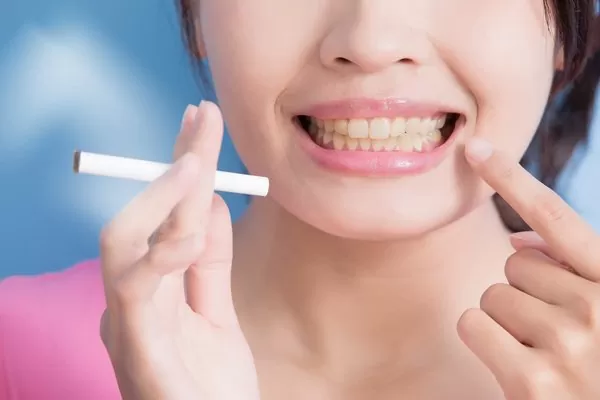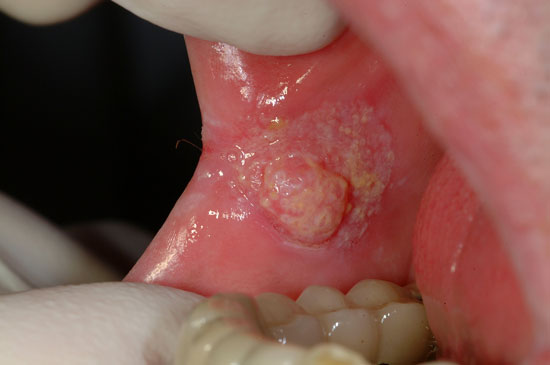Smoking can have major effects on the health of your gums, teeth, mouth and throat.
About 20% of the Australian population are current smokers. Most people start the habit in their teens. Smoking is a major cause of many health problems including heart and lung disease, stroke, poor pregnancy outcomes and oral disease.
Smoking facts
Smoking produces smoke which is drawn directly into the mouth. Approximately 4000 chemicals, 60 of which are carcinogenic, have been identified in this smoke. These include carbon monoxide, hydrogen cyanide and reactive oxidising radicals.
Some problems caused by smoking are obvious, such as stained teeth and bad breath. However, smoking is one of the greatest and most preventable risk factors for more severe oral disease including oral cancer, mouth lesions, gum disease, tooth decay, and cleft lip and palate.

Oral cancer
Studies have reported tobacco smokers as having a 3-5 times greater risk of oral cancer than that of non-smokers. Many early signs of oral cancer are painless and difficult to detect without a professional examination. The later the diagnosis f oral cancer, the greater the spread to other parts of the body.
Signs and symptoms of oral cancer:
- Sores in the mouth that bleed easily and fail to heal.
- Persistent white or red patches in the mouth.
- Lumps or soreness in the mouth, throat or tongue.
- Difficulty chewing or swallowing,
- Changes in occlusion or “bite”.

Other conditions caused by smoking
Leukoplakia
A white patch on the skin inside the mouth that cannot be wiped off. This lesion is more frequent in tobacco users and may develop into cancer. Regular examinations will ensure that any lesion is identified and managed accordingly.
Hairy tongue
An overgrowth and thickening of papillae on the top surface of the tongue, which turns brown to black. Trapped bacteria may produce a burning sensation, foul taste or smell from the tongue.
Smoker’s palate
A condition where the roof of the mouth develops a thick white discolouration with red dots. This is due to the narrowing of the blood vessels from the nicotine and resolves when the smoker quits.
Smoker’s melanosis
A dark discolouration on the skin of the mouth. In most cases, this resolves when the smoker quits.
Tobacco stains
These can penetrate into tooth enamel and dentures, causing discolouration. Whilst there are ways to whiten teeth, sometimes this form of discolouration can be permanent.
Tooth decay
Smoking reduces the amount of saliva in the mouth, which aids in clearance of food and bacteria from the mouth, and neutralises the acids that cause tooth decay. Without saliva, the crown and root surfaces of teeth are at greater risk of developing holes.
